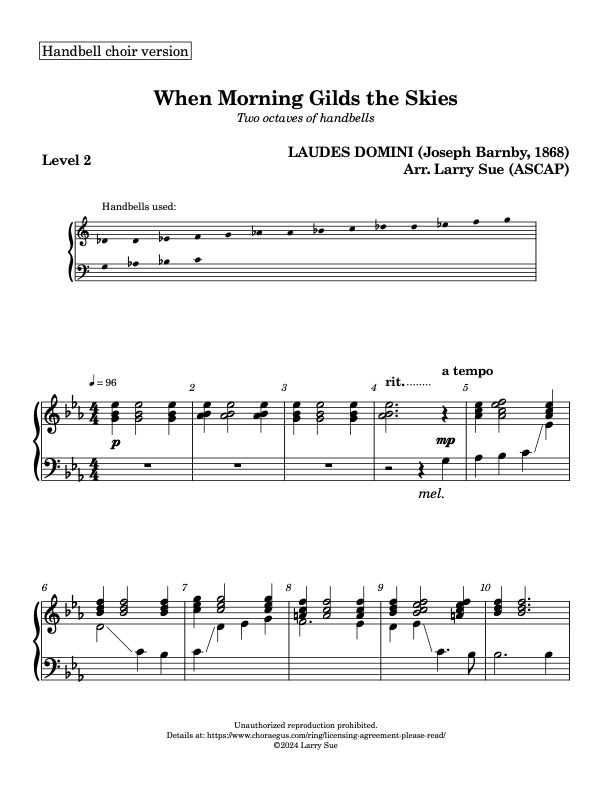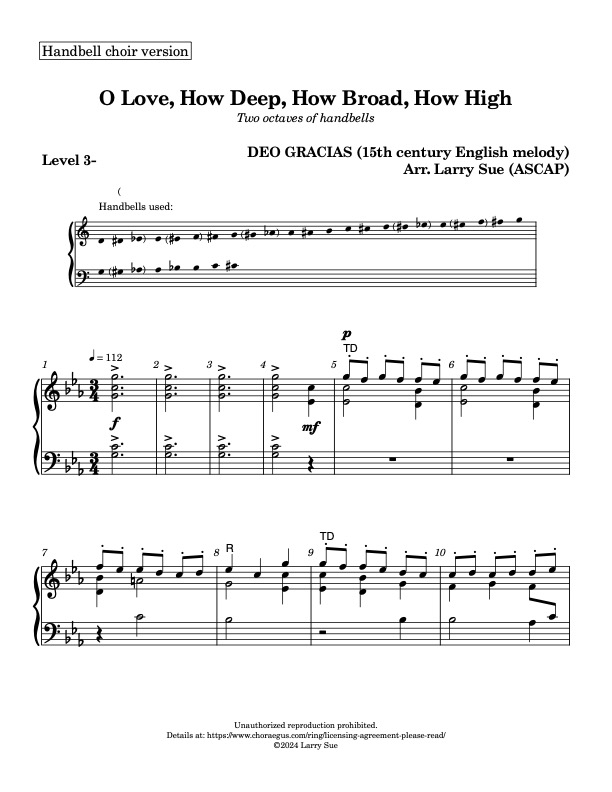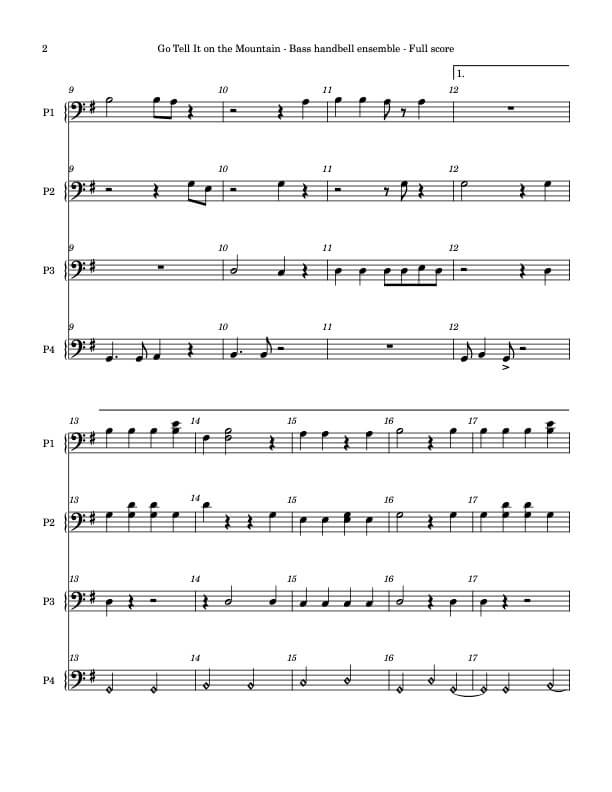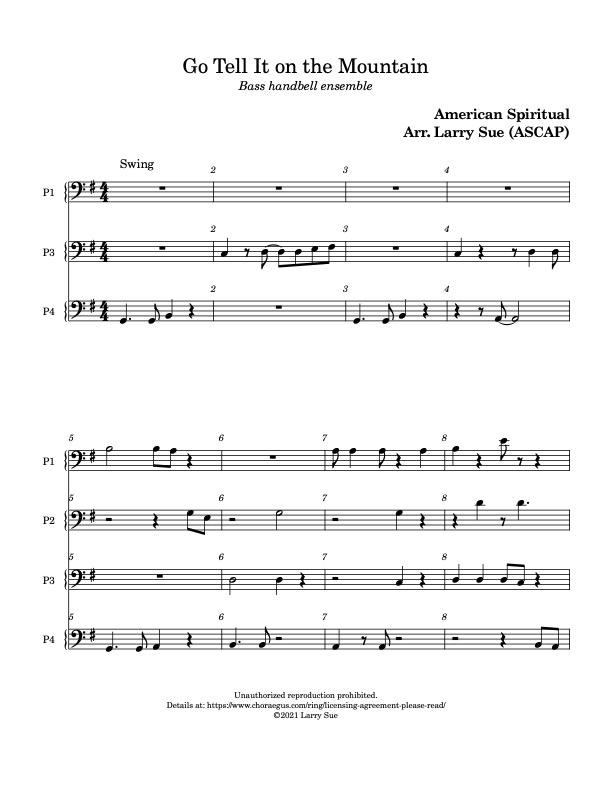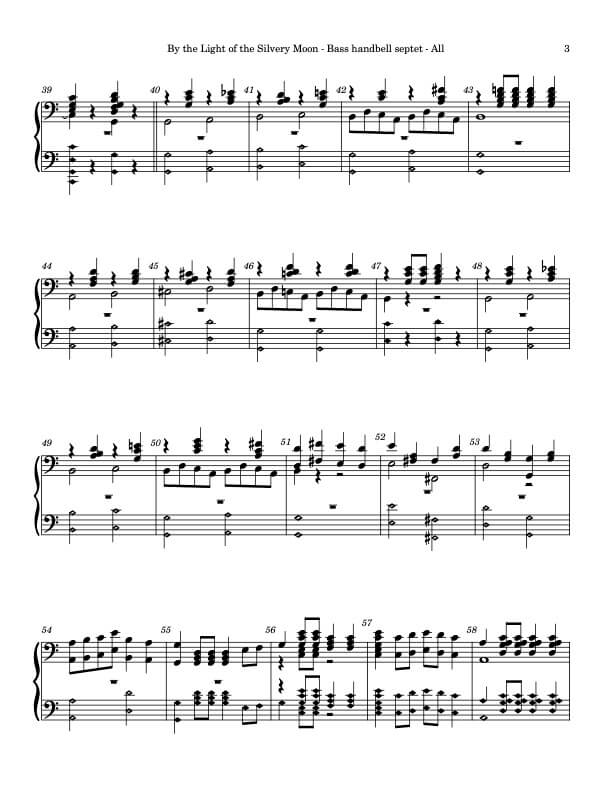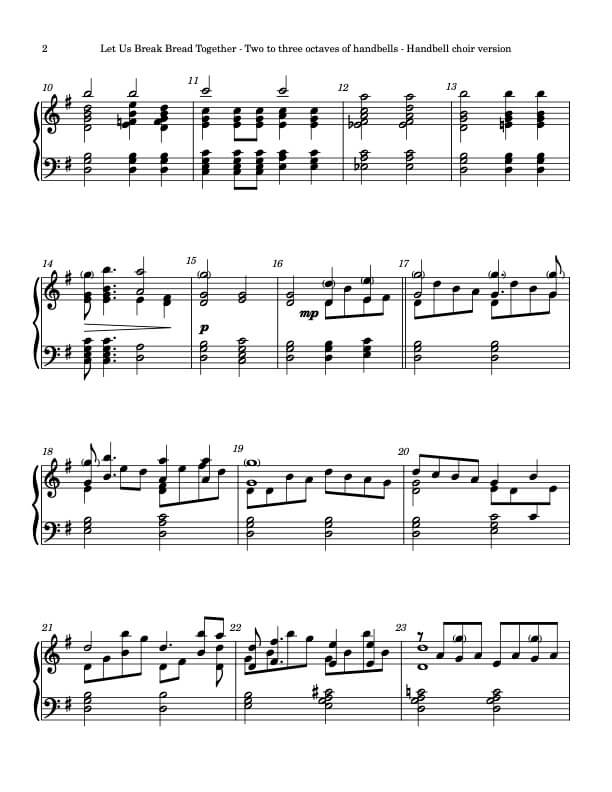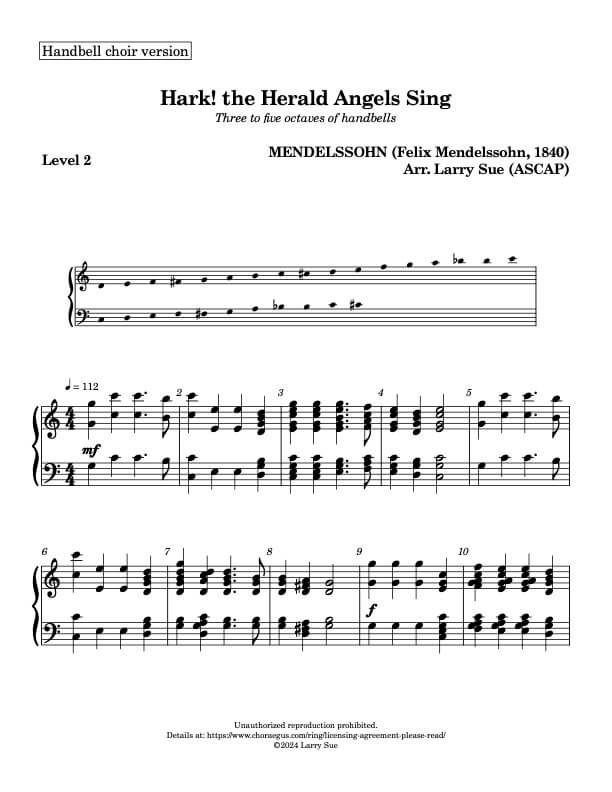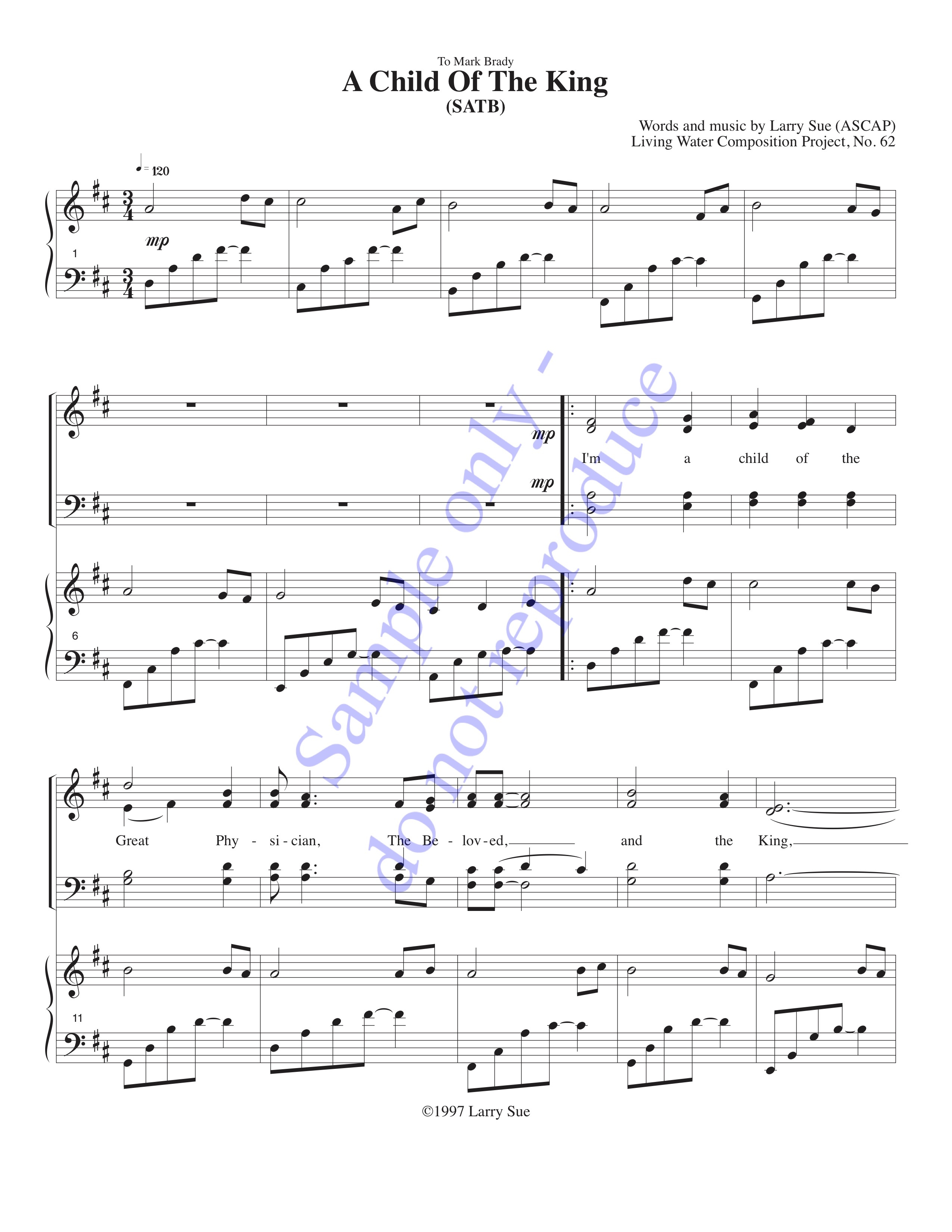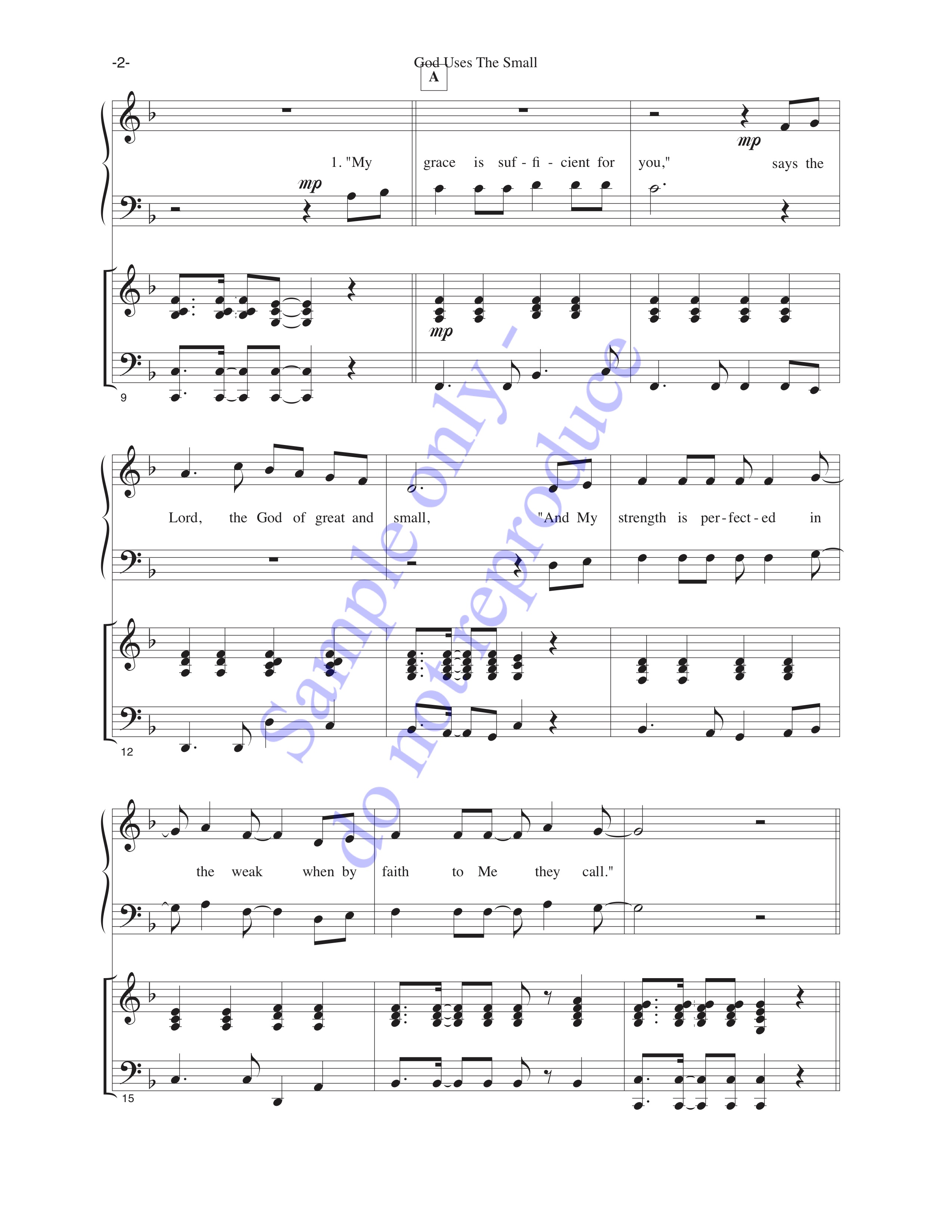James Murray wrote Jingle Bells in 1857. We understand that it actually was a Thanksgiving song for a children’s play at his church… but history has made it into a Christmas song. That probably makes sense since December is snowier than November in most areas (well… if you’re far north enough). Dashing through the snow …
Tag: 8-bell
Starting in 2012, we (Larry and Carla Sue) developed a large repertoire of music for eight handbells which we perform as four-in-hand duets. These pieces ranged from fairly simple to maniacally difficult, and eventually led to the creation of their “Surprisingly Easy”™ eight-bell arrangements so that there would be more options for the ringing world at large.
As eight-bell repertoire works well with a two-in-hand quartet (two bells each) or a four-in-hand duo, or with a trio where the bells are divided 4-2-2 or 3-3-2. We've even seen one instance of playing eight-bell music with eight ringers with one bell apiece, a la Sacred Harp.
Nov 19
St. Anthony Chorale – for eight handbells
Joseph Haydn wrote this chorale in the 18th century. Our arrangement for eight handbells is quite accessible, and will be a welcome addition to any church service.
St. Anthony Chorale – Eight handbells
Joseph Haydn wrote this chorale in the 18th century. It’s a lovely piece from the Classical period which will work well as a prelude or offertory. Standard Version: ”Dual-Range”™ Score Package: $ US G5-based practice track: $ US F5-based practice track: $ US Purchasing this 8-bell arrangement gives you permission to print and maintain up …
Nov 12
Somos del Señor (SOMOS DEL SEÑOR) – for eight handbells
This gentle Spanish-language hymn reflects on the fact that no matter what may happen to us, we belong to God. We hope you’ll enjoy this eight-bell arrangement! Pues si vivimos, para El vivimos y si morimos para El morimos. Sea que vivamos o que muramos, Somos del Señor, somos del Señor. If we live, we …
Somos del Señor (SOMOS DEL SEÑOR) – Eight handbells
This gentle Spanish-language hymn reflects on the fact that no matter what may happen to us, we belong to God. Pues si vivimos, para El vivimos y si morimos para El morimos. Sea que vivamos o que muramos, Somos del Señor, somos del Señor. If we live, we live for Him, and if we die, …
Nov 09
Skye Boat Song – for eight handbells and piano
This soothing, plaintive song is about Prince Charles’ escape to the Isle of Skye after his defeat in the Battle of Culloden in 1746. Our arrangement for eight handbells and piano is fairly easy; you’ll enjoy playing it! Speed, bonnie boat, like a bird on the wing, Onward! the sailors cry; Carry the lad that’s …
Skye Boat Song – Eight handbells
The soothing, plaintive Skye Boat Song is about Prince Charles’ escape to the Isle of Skye after his defeat in the Battle of Culloden in 1746. Imagine a defeated leader departing the battleground, seeking safety by crossing the water, and hoping to fight another day. In church services, this melody is matched with the hymn …
Nov 05
O Give the Lord Wholehearted Praise (GERMANY) – for eight handbells
This hymn first appeared in W. Gardiner’s Sacred Melodies in 1815. Here’s our eight-bell arrangement! O give the LORD wholehearted praise. / To him thanksgiving I will bring; with all his people I will raise / my voice and of his glory sing. His saints delight to search and trace / his mighty works and …
O Give the Lord Wholehearted Praise (GERMANY) – Eight handbells
O Give the Lord Wholehearted Praise first appeared in W. Gardiner’s Sacred Melodies in 1815. O give the LORD wholehearted praise. / To him thanksgiving I will bring; with all his people I will raise / my voice and of his glory sing. His saints delight to search and trace / his mighty works and …
Oct 29
Funeral Tango – for eight handbells
This somewhat twisted Chopin arrangement/tango/twelve-bar blues came to life as part of the final Low Ding Zone concert series. We’re pleased to offer our seriously boiled-down eight-bell arrangement of this work. Red rose is optional, of course.


